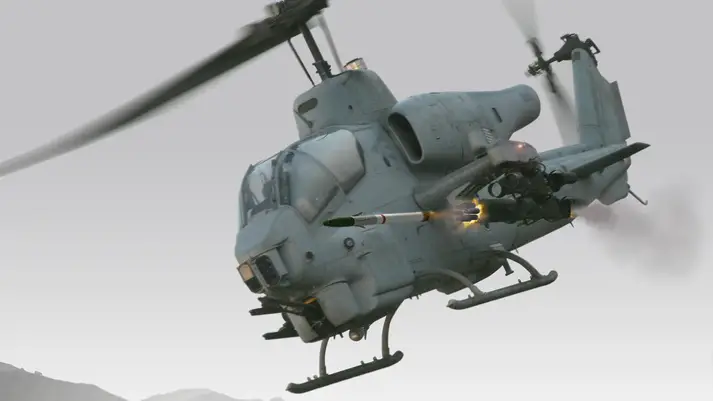The Advanced Precision Kill Weapon System (APKWS) is a design conversion of Hydra 70 unguided 2.75-inch (70 millimeter) rocket with a laser guidance kit to turn them into precision-guided munitions (PGMs), giving aircrafts a low-cost surgical strike capability. APKWS is approximately one-third the cost and one-third the weight of the current inventory of laser-guided weapons, has a lower yield more suitable for avoiding collateral damage, and takes one quarter of the time for ordnance personnel to load and unload. The APKWS rocket redefines precision by hitting the target with pinpont accuracy and minimal collateral damage – critical for air-to-ground missions when you only have one shot.

The rocket is proven in combat for five years running, and is the U.S. Government’s only program of record for 2.75-inch laser-guided rockets. Where possible the system utilizes existing Hydra 70 components such as launchers, rocket motors, warheads and fuzes. The APKWS rocket bridges the gap between unguided rockets and anti-armor munitions, consistently delivering pinpoint accuracy to soft targets at a low cost, that no other system can match. The weapon bridges the gap between the Hydra 70 and AGM-114 Hellfire systems and provides a cost-effective method of engaging lightly armored point targets. It converts the Hydra 70 unguided rocket into a precision guided munition through the addition of a mid-body guidance unit developed by BAE Systems.

There are a number of precision-guided weapons on the market, but few consistently hit their intended target with pinpoint accuracy, while leaving minimal collateral damage. APKWS guidance section is designed to lock onto targets from over 3 kilometers away, keeping aircraft and laser designators at a safe distance from threats. Innovative by design, the APKWS rocket includes advanced DASALS seeker optics located on all four guidance wings. Once fired, the wings deploy, and the optics lock in, guiding the rocket to the target – delivering accuracy when it matters most. Wing slot seals protect optics from adjacent firings, sand, and moisture prior to launch to ensure no damage or debris inhibit the seeker from locking onto targets.

Launch platforms
- Current rotary wing: UH-1Y Venom, AH-1W SuperCobra, AH-1Z Viper, Bell 407GT, AH-64 Apache, Eurocopter Tiger, MH-60S/R Seahawk
- Current fixed-wing: AV-8B Harrier II, OV-10 Bronco, F-16 Fighting Falcon, A-10 Thunderbolt II
- Planned rotary wing: MQ-8 Fire Scout, OH-58 Kiowa (company funded), V-22 Osprey, AH-6 Little Bird
- Planned fixed-wing: A-29 Super Tucano, F/A-18 Hornet, F/A-18 Super Hornet, CN-235

The APKWS II uses the Distributed Aperture Semi-Active Laser Seeker (DASALS) technology. This system allows a laser seeker to be located in the leading edge of each of the forward control canards, working in unison as if they were a single seeker. This configuration allows existing warheads from the Hydra 70 system to be used without the need for a laser seeker in the missile nose. The APKWS II system is composed of the launch platform, rockets equipped with the WGU-59/B mid-body guidance unit, the lengthened 7-tube LAU-68 F/A rocket launcher, the SCS 7 aiming cue (not needed for attack helicopters), and Fastpack PA-140 and CNU-711/E storage kits for rockets and guidance kits, respectively, to ensure they are safe in the field. The WGU-59/B mid-body guidance unit is equipped with DASALS seeker optics which deploy 0.5 seconds after launch and is attached in between the Mk 66 Mod 4 rocket motor and a warhead and fuze, which increases length by 18.5 in (47 cm) and weight by 9 lb (4.1 kg) over the legacy Hydra system. Firing ranges are 1,100-5,000 meters, the former of which can be hit less than 5 seconds after firing. Maximum range is constrained by use of the existing Hydra 70 motor, but since the seeker can see as far as 14 km (8.7 mi), a more powerful motor could extend range while retaining accuracy; Nammo is working on a modified rocket motor that can extend range to 12–15 km (7.5–9.3 mi).
















